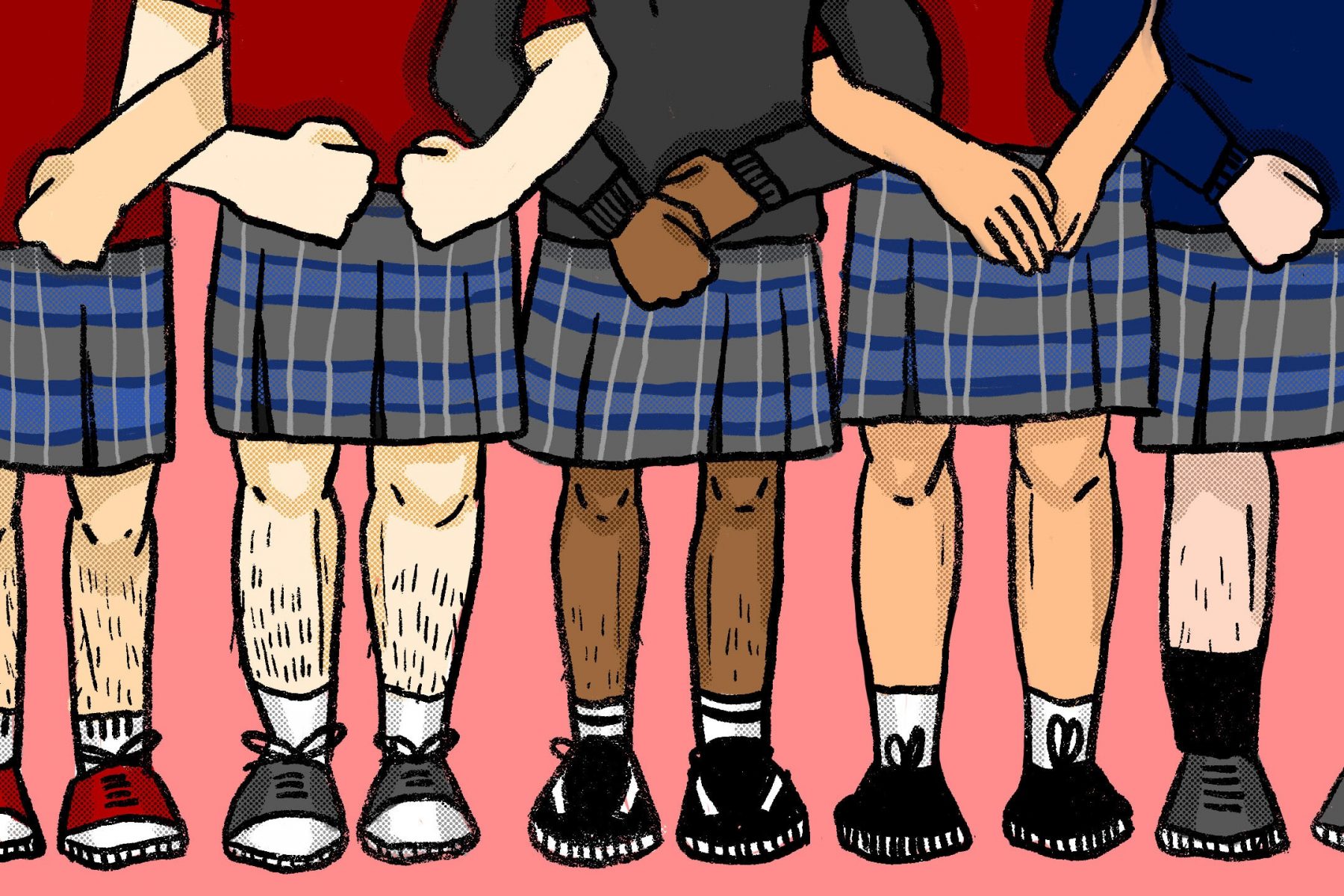A movement has begun in Québec, Canada, against school dress codes. Posts of boys wearing uniform skirts to protest dress codes have circulated around social media. The boys are specifically protesting the overly restrictive rules regarding skirts that are present in many Canadian high schools. School rules dictate that skirts cannot be anything less than 10 centimeters above the knee. In response, these high school boys are fighting against sexism, oversexualization of female bodies, homophobia and toxic masculinity.
A student of Collège Nouvelles Frontières in Montreal, 16-year-old Zach Paulin, shared his plans to wear a skirt on Oct. 9 with about 30 classmates. To his surprise, over 100 boys showed up wearing uniform skirts. He told CBC, “I knew it was going to be a big movement, but not that big of a movement. I was pleasantly surprised.” Since then, many other high school students across Québec have also joined the movement, thanks to the influence of social media.
A student from Villa Maria told the Montreal Gazette, “I don’t feel like wearing one every day. But I respect people who do. As a symbol, I will wear it with pleasure.”
The students at Villa Maria encountered ridicule for wearing skirts, including implications that they were transgender or gay, and were told to head to the principal’s office. When told about the situation, the assistant director, Françoise Dubuc, apologized to the boys receiving criticism and said it was “unacceptable” for their school to lack such inclusivity.
School dress codes throughout North America enforce strict rules over women’s clothing, often reporting that the distraction of their bodies produces negative academic results. Students in Montreal protested regulations regarding the length of uniform skirts, while other students in North America protest over the regulations against showing bra straps, shoulders and legs. The suppression of women’s clothing perpetuates the act of victim-blaming, reaffirming the mentality that young girls need to watch how they dress in order to protect themselves from the male gaze. Additionally, by telling young girls their bodies are “distractions,” it solidifies the sexist misconception that a female body is for the pleasure of men.
Rather than teaching girls to monitor how they dress, it would be beneficial to teach boys to respect girls’ bodies, which is one of the primary reasons for the movement. The protesting boys from Québec focused their concern on the oversexualization of young girls’ bodies; and by wearing skirts themselves, they showed that if boys wore skirts, they wouldn’t be ridiculed because of the amount of skin they exposed, but rather, because of how the skirts feminized them. They held up a mirror to society, showing the problems of sexism and homophobia and fought for the autonomy that everyone should have over their own clothing and bodies.
Simon Lefebvre-Gagnon, another student from Villa Maria, revealed to the Montreal Gazette that “[the experience] really changed me. I saw how women could feel in certain situations. It made me more sensitive to this kind of thing.”
These high school boys stood up for their female classmates, recognizing the struggles they face in regard to the dress code. Not only did it show the school and society the problems with regulating girls’ clothing, it helped the boys themselves to empathize with the insecurity and discrimination girls face every day due to their bodies.
Jaylene Kuo, an advocate that helped change her school’s dress code in British Columbia, told CBC, “It shocked me how much [the dress code was] focused on the ways girls can or cannot dress. It body-shames girls and it’s offensive to boys because it suggests they can’t control their thoughts.”
Kuo’s school ended up changing the school dress code by removing gender-specific language as well as the word “distracting” from the school regulations. She went on to say that she hopes other high schools can follow suit.
In addition to female students, LGBTQ+ students face harassment by the school dress codes. The Atlantic cites a 2013 GLSEN study, finding that “19 percent of LGBT students were prevented from wearing clothes that were thought to be from another gender” and that “nearly 32 percent of whom have been prevented from wearing clothes that differed from those designated for their legal sex.”
Suppression of identity harms LGBTQ+ youth. When schools enforce strict dress codes that force students to dress the opposite of their true gender, it leads to trans and gender-nonconforming students to feel insecure and unassociated with their own bodies. School dress codes should not enforce gendered stereotypes and they should allow students to dress however they are comfortable; doing so would allow for more inclusive schools.
The Human Rights Campaign advocates for the principle that “a dress code should never target specific identities,” including gender identity, sexual orientation, sex, race, ethnicity and religion. The campaign went on to say: “Dress codes should allow students the most choice possible in a way that neither creates a hostile environment nor restricts their individuality.”
Paulin took to Instagram the day of his school’s protest, posting pictures of himself in the skirt, writing: “So, by wearing a skirt, we are united and together against the sexualization of women and we’re sending a message against toxic masculinity, that’s keeping boys from being who they truly are, without judgment.”
Although there hasn’t been any update on the school administration’s response to the protest, Paulin explained, “Teachers used it as an opportunity to raise the subjects of toxic masculinity, LGBTQ rights and equality in classroom discussion.”
Despite the fact backlash against the dress code protest, it ultimately led to a moment of unity for all genders in the school system, bringing together classmates to fight against the sexist policing of skirt lengths. The movement educated many high school boys about the discrimination that women, other boys and LGBTQ+ people face due to the clothes that they wear. Most importantly, not only are the schools involved in the conversation, but now a whole new array of people are included due to the circulation of the protest on social media. The movement opened up the conversation about double standards and sexism, thanks to these boys using their courage to create solidarity.

















